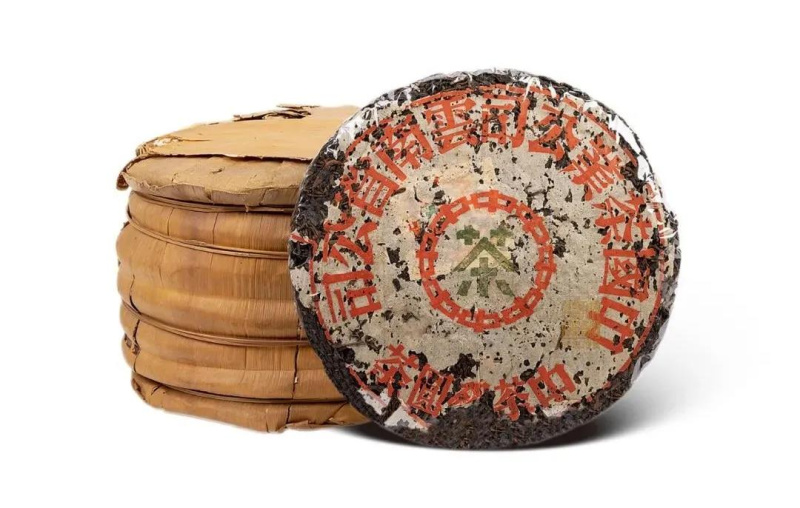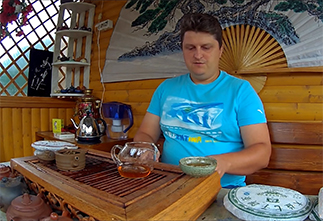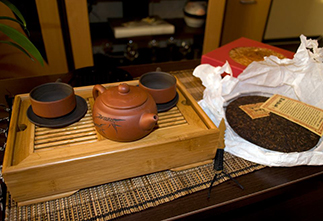Shu puer 2007 "Bawan" from the "Haiwan" plant, 3 kg pancake
Name: shu tea "Bawan"* in a gift box
Whale. 霸王饼熟茶礼盒装, pinyin bàwáng bǐng shú chá lǐ hé zhuāng
* Chief of the Princes, a title of a powerful ruler in ancient China
Date of manufacture: 2007.
Declared weight: 3 kilograms.
Manufacturer: Yunnan Haiwan* tea company (Chinese: 云南海湾茶业有限公司, pinyin yúnnán hǎiwān chá yè yǒuxiàngōngsī).
* Haiwan is translated as bay/bay.
Puer "Bawan" 2007 from the well-known tea factory Haiwan. This company is notable for the fact that its director and chief technologist is Mr. Zou Bingliang. He was born in 1939, worked from the age of 20 at the Menghai tea factory until his retirement and was the main creator of the technology for producing shu puer. So, shu "Bawan" is bought by Mr. Bingliang himself. The tea gives a rich sweetish infusion with a hint of sourness. Not earthy and not astringent. Has a long aftertaste.
First published on 21.12.2014.
Copyright © Chaline.Ru
|
Name in Chinese
|
霸王饼熟茶礼盒装 |
|
Pinyin
|
bàwáng bǐng shú chá lǐ hé zhuāng |
|
English name
|
Bavan |
|
Translation
|
Bavan Shu tea in a gift box |
|
Country
|
China |
|
District
|
Xishuangbanna Dai Autonomous Prefecture |
|
Provinces
|
Yunnan (云南) |
|
Region
|
Menghai (勐海) |
|
Habitat
|
Мэнхай (勐海, měnghǎi) - купажированное сырье |
|
Manufacturer
|
Хайвань (海湾) |
|
Raw material production date
|
2007 |
|
Year of pressing
|
2007 |
|
Pressing form
|
Bing Cha (Cake Tea) |
|
Declared weight, g
|
3000 |
|
Tea tree (bush) variety
|
Da Ye Cha |
|
Size
|
50x50x10 |
|
Length, cm
|
50 |
|
Width, cm
|
50 |
- Комментарии
- Вконтакте
Pu-erh is one of the most unique types of tea, which only gets better with age. Many people, when they first encounter this tea, wondered: why is pu-erh more often found in pressed form (cakes, bricks, tochas), and not in loose form? The reasons for this are related to both history and the practical aspects of storing and fermenting tea. Despite modern technologies that allow the production of loose pu-erh, the shape of pressed cakes remains unchanged. And pu-erh is more often found on sale in pressed form, for example, in the form of cakes or bricks, and loose pu-erh is less common. We will talk about the reasons for pressing pu-erh into cakes in this article.
Puer is a unique Chinese tea that is distinguished by its depth of taste, complexity of aromas and versatility of aftertaste. Its taste characteristics are formed under the influence of many factors, from growing conditions to the brewing method. Let's look at the main ones.
The question often arises: how to brew puerh correctly? Sometimes the phrase "to get high" is added to it. Moreover, everyone has their own understanding of this phrase. Some mean vigor, and some - intoxication. So how to brew puerh tea correctly? Let's consider several options.
Traveling through the tea mountains, we found ourselves in another land of blue roofs - the village of Zhongcai, which is located in the Menghai district of Yunnan province. According to tradition, we were shown another local tea tree, which, according to the Chinese, is at least a million years old :) The village is very authentic, not designed for tourists, there are many wild pu-erhs there and, of course, we were warmly received. They treated us to local cuisine and tea. We also asked the residents about the prices of tea and how they have changed in recent years.
The tea ceremony occupies a special place in the centuries-old Eastern tradition. And although the essence of this phenomenon remains constant, the nature and external manifestations of the tea ceremony in different nations have their own national characteristics. In each Chinese province, the tea ceremony and the tea used in it are varied: for example, residents of the southern provinces prefer green tea, and residents of the northern provinces - red tea, in Fujian province they more often use Oolong tea, and in Yunnan province Puer tea is widely known.



























































































